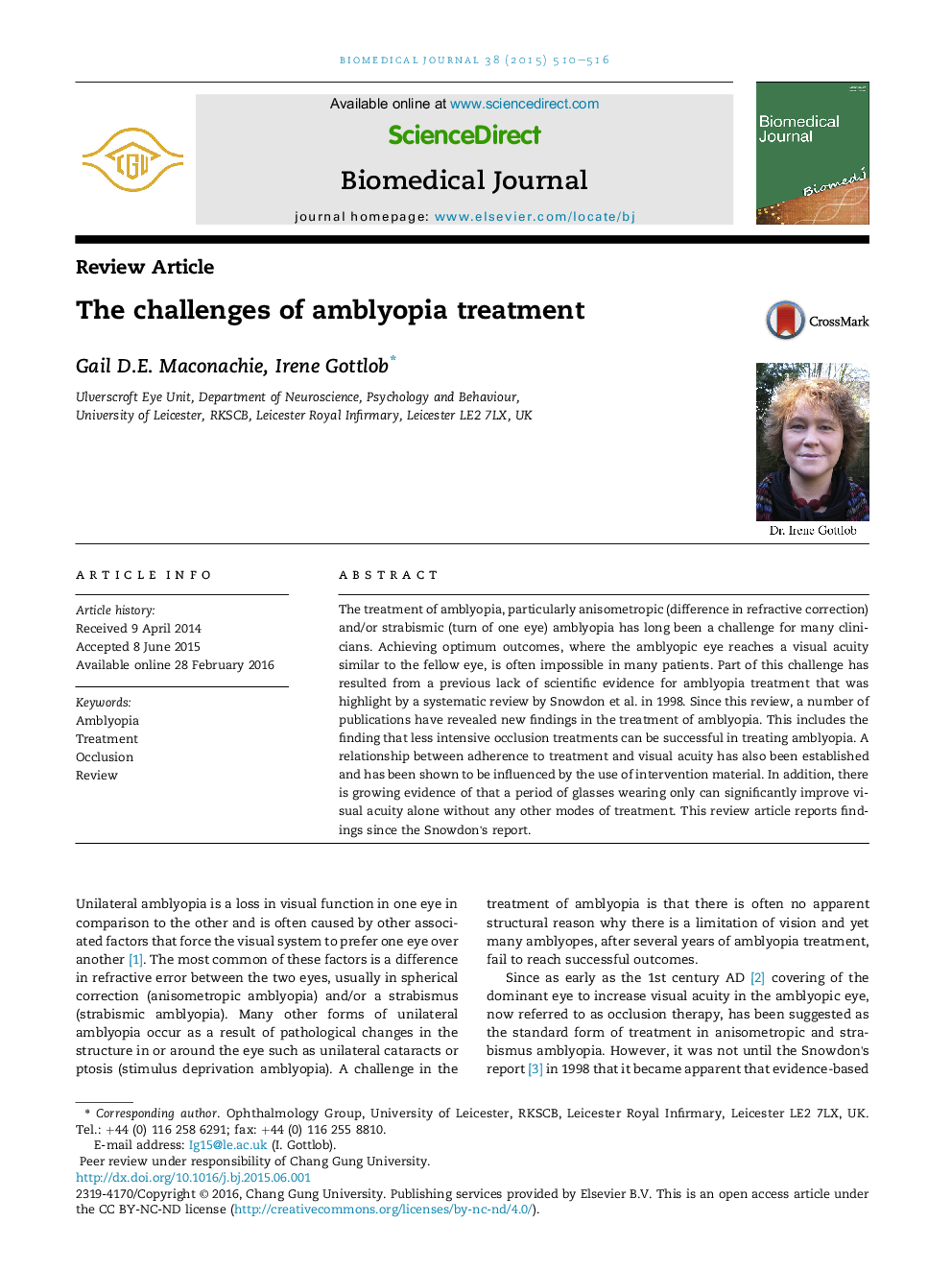| Article ID | Journal | Published Year | Pages | File Type |
|---|---|---|---|---|
| 2106079 | Biomedical Journal | 2015 | 7 Pages |
The treatment of amblyopia, particularly anisometropic (difference in refractive correction) and/or strabismic (turn of one eye) amblyopia has long been a challenge for many clinicians. Achieving optimum outcomes, where the amblyopic eye reaches a visual acuity similar to the fellow eye, is often impossible in many patients. Part of this challenge has resulted from a previous lack of scientific evidence for amblyopia treatment that was highlight by a systematic review by Snowdon et al. in 1998. Since this review, a number of publications have revealed new findings in the treatment of amblyopia. This includes the finding that less intensive occlusion treatments can be successful in treating amblyopia. A relationship between adherence to treatment and visual acuity has also been established and has been shown to be influenced by the use of intervention material. In addition, there is growing evidence of that a period of glasses wearing only can significantly improve visual acuity alone without any other modes of treatment. This review article reports findings since the Snowdon's report.
